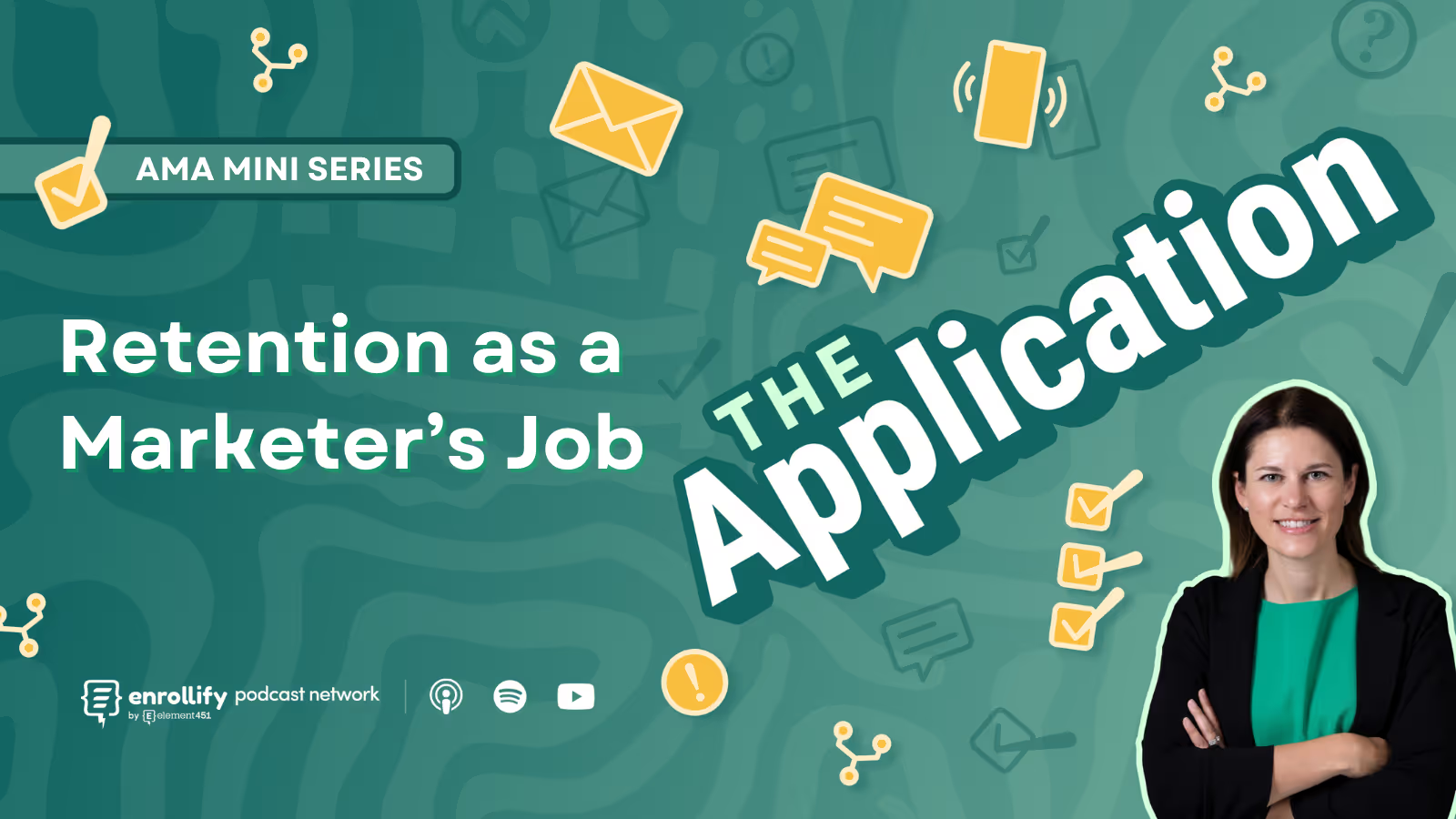About the Episode
Got a story to tell? An innovative idea to share? Fill out our guest nomination form and let's chat!
About the Episode:
February 14 Dear Colleague Letter
Ed. Dept.’s Broad DEI Warning Puts College Leaders in ‘Enormously Complicated Situation
Mallory and Seth dive into a growing crisis in higher education—burnout. Drawing from a recent Chronicle of Higher Education report, they explore the alarming data on faculty and staff exhaustion, workload increases, and political pressures. But rather than just acknowledging the issue, they focus on solutions—specifically, how AI can help alleviate burnout by automating repetitive tasks, improving efficiency, and allowing educators to focus on what they do best. Whether you’re an AI skeptic or an early adopter, this episode unpacks the practical ways AI can transform higher ed workplaces for the better.
Key Takeaways
- Higher Ed is Overworked and Understaffed: 65% of faculty and staff report a heavier workload than five years ago, often due to layoffs and unfilled positions.
- Burnout is a Crisis: Faculty satisfaction is declining, with many citing increased student expectations and administrative burdens as key stressors.
- AI Can Be a Game-Changer: Automation tools can streamline administrative tasks, enhance student communication, and free up time for higher-impact work.
- Adoption Must Start from the Bottom-Up: Many higher ed leaders aren’t AI users themselves, so frontline staff and teams must take the initiative in finding and implementing AI solutions.
- AI Implementation is Incremental: Small changes—like using AI-powered voice-to-text tools or automated content summarization—can significantly reduce workload over time.
How AI Can Help Solve Higher Ed’s Burnout Crisis
The Data Behind the Problem
Higher ed professionals have been feeling the strain for years, but new data puts the crisis into perspective. The Chronicle of Higher Education report found that 65% of faculty and staff say their workloads have increased compared to five years ago. More than 40% report working significantly more than before, often due to staff reductions that have left remaining employees picking up the slack. Faculty also report feeling increased pressure to meet evolving student needs, while political influences add another layer of stress—42% of respondents cited political interference as a major issue.
Burnout isn’t just about hours worked; it’s about the mental toll of constantly feeling behind, under-resourced, and unable to focus on meaningful work. This has led to a talent retention crisis, with many experienced professionals leaving higher ed altogether. Given these challenges, institutions must urgently rethink how they support their workforce—and AI may be part of the solution.
Can AI Reduce Workload and Improve Efficiency?
One of the most promising solutions for burnout is the strategic use of AI to offload repetitive tasks. AI-powered tools can help faculty and staff automate administrative work, optimize communication, and even personalize student support. For example, faculty members drowning in committee work could use AI to summarize meeting notes, generate reports, or manage routine email responses.
AI is already making an impact in organizations outside of higher ed. Seth shared how his agency implemented an AI enablement workshop to identify areas where automation could reduce workload. By focusing on repeatable tasks, employees were able to free up time for strategic work. In higher ed, similar approaches could help staff reclaim time for student engagement and curriculum development rather than administrative drudgery.
Practical AI Tools for Higher Ed Professionals
For AI adoption to succeed, it doesn’t need to start with sweeping institutional change. Small, tactical implementations can make a big difference. Here are some AI tools that can help higher ed professionals right now:
- Voice-to-Text Software (Whisper): Converts speech into accurate text, making email writing and documentation faster.
- AI Summarization Tools (Notebook LM): Organizes research and synthesizes complex information into digestible insights.
- Loom Video Messaging: Reduces unnecessary meetings by allowing teams to communicate asynchronously with video and text-based transcriptions.
- ChatGPT and Other AI Writing Assistants: Helps draft reports, emails, and content, saving valuable time.
Institutions that proactively integrate AI into daily workflows will be better positioned to combat burnout, retain top talent, and ultimately create a more sustainable work environment.
Connect With Our Hosts:
Mallory Willsea
https://www.linkedin.com/in/mallorywillsea/
https://twitter.com/mallorywillsea
Seth Odell
https://www.linkedin.com/in/sethodell/
https://twitter.com/sethodell
About The Enrollify Podcast Network: The Higher Ed Pulse is a part of the Enrollify Podcast Network. If you like this podcast, chances are you’ll like other Enrollify shows too!
Some of our favorites include Generation AI and Confessions of a Higher Education Social Media Manager.
Enrollify is produced by Element451 — the next-generation AI student engagement platform helping institutions create meaningful and personalized interactions with students. Learn more at element451.com.
Attend the 2025 Engage Summit!
The Engage Summit is the premier conference for forward-thinking leaders and practitioners dedicated to exploring the transformative power of AI in education.
Explore the strategies and tools to step into the next generation of student engagement, supercharged by AI. You'll leave ready to deliver the most personalized digital engagement experience every step of the way.
👉🏻 Register now to secure your spot in Charlotte, NC, on June 24-25, 2025!















